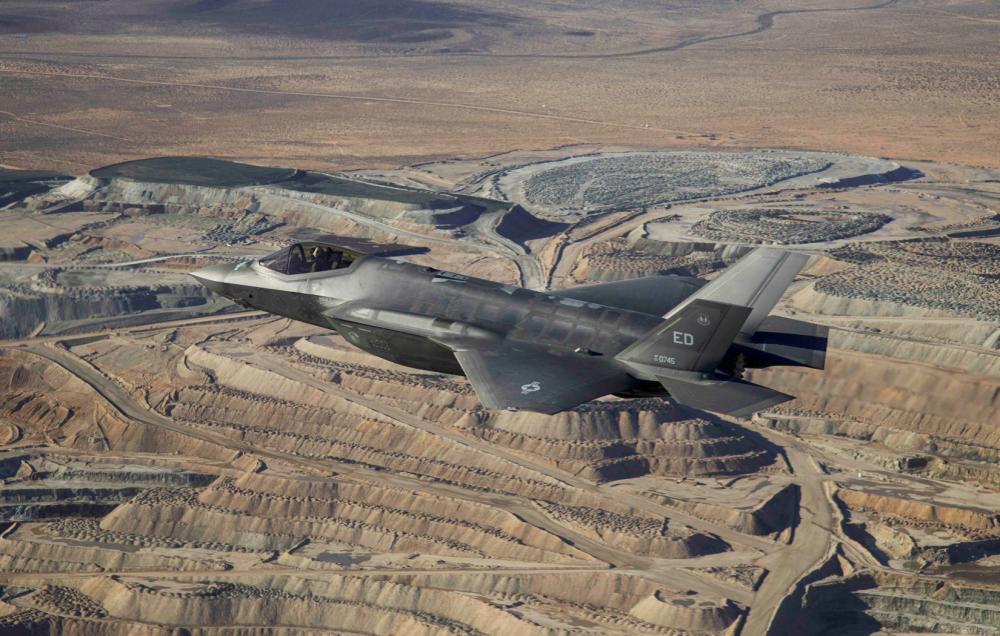First F-35 upgraded to Technology Refresh 3 configuration took off
A developmental test team from the USAF’s 461st Flight Test Squadron conducted the first flight of an F-35 in the Technology Refresh 3 (TR-3) configuration on Jan. 6, the prelude to the development of the F-35 Block 4.
The TR-3’s improved processors and more powerful memories provide the computational power needed to support the modernized capabilities of the future F-35 Block 4, including: new sensor arrays, more long-range precision weapons, enhanced electronic warfare capabilities, more powerful data fusion and greater cross-platform interoperability. These capabilities provide the pilot with a combat advantage to identify, track, attack and survive against advanced air, ground and cyber threats.
As released by Lockheed Martin, the TR-3 significantly upgrades the aircraft’s processing and memory capacity, which will enable the F-35 to run advanced software packed with next-generation combat capabilities.
“Today’s first flight is an important step in enabling future capabilities to ensure F-35 remains unrivaled across the globe. We look forward to continued collaboration with the JPO and industry partners to deliver TR-3,” said Bridget Lauderdale, Lockheed Martin vice president and general manager, F-35 Program. “Our mission is to provide our U.S. service members and allies with an aircraft that will guarantee 21st Century security so they can deter and defeat threats and come home safely.”

The TR-3 program has overcome technical complexity challenges with hardware and software, and is now on-track to deliver capability to the U.S. and its allies starting in 2023. The government and industry team continue to find innovative ways to ensure delivery of critical capabilities to defeat future threats. Lessons learned in the execution of the TR-3 program will be applied across the entire Block 4 modernization program.
The long-awaited Block 4
The Block 4 aircraft will represent a major leap forward in capabilities over the current F-35, and should have most of the availability issues that plagued the current aircrafts resolved. It is the improvements in computational capability installed on the TR-3 that will support the powerful capabilities to be installed on the Block 4 F-35s.
The Block 4 version of the F-35 will have a new radar (the APG-85), new electronic warfare capabilities, more and new weapons (including nuclear capability), improvements in its optronic detection systems (DAS and EOTS) and improvements in self-diagnostic systems, as well as enhanced interoperability with fourth and fifth generation fighters.
In order to provide the necessary energy to be able to use the future block 4 capabilities, the upgrade and modernization of its P&W F-135 engine is being contemplated, or its re-engining by one of the future adaptive cycle technology (AETP) engines under development, which offer more power, lower consumption, greater electrical power generation capacity and a much more efficient handling of the heat generated by the aircraft’s electronic systems.
The TR-3 computational upgrade will be applied to new units under construction from Lot 15 onwards, and aircraft from earlier lots, which have the TR-2, cannot be upgraded to the future Block 4, which is why the U.S. Air Force decided to delay and space out the acquisition of the F-35s, because they preferred to wait for the arrival of Block 4
Recent F-35 export customers such as Switzerland, Finland, Germany and Canada also purchased the Block 4 model, which, due to delays in the TR-3 upgrade program, will have to take delivery of their aircraft in an intermediate configuration, as the full-capability upgrade is expected to be completed by 2029.

/https://aviacionlinecdn.eleco.com.ar/media/2023/01/F-35-TR-3.jpg)
Para comentar, debés estar registradoPor favor, iniciá sesión